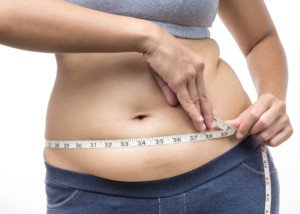
Do you think you’re too old to improve your diet for your cholesterol because it’ll take too long to kick in? Guess what: you’re wrong.
“Any blood work that is obtained on an individual can be viewed as a snapshot in time,” says Richard Kelley, MD, a practicing physician in Texas for 20+ years, and author of “The Fitness Response,” “The Three-Hour Appetite” and the ebook, “The Fitness Response ‘Diet’ for Women.”
He continues, “Consequently, specific lab values, regardless of what they are, can often vary from hour to hour and day to day.
“Though lipid and cholesterol testing is usually done at intervals of several weeks between panels, depending on what a given practitioner is interested in looking at, I have had the opportunity on many occasions to observe repeated studies of LDL and other components of the lipid panel, within days of a patient changing to a cleaner form of diet, and have been able to observe improvement in LDL within a matter of days.”
LDL, the “bad cholesterol,” stands for low density lipoprotein, and you don’t want this number getting above 150.
It’s possible to have a very low triglyceride number (the lower, the better) at the same time that the LDL is on the high side.
Don’t underestimate the power of a better diet in lowering bad cholesterol, regardless of your age.
Dr. Kelley continues, “We know, without a doubt, that in patients who have no predisposition to elevated triglyceride or LDL cholesterol, these values can be elevated or show improvement, sometimes within a matter of two to three days, to varying degree, with simple changes which improve one’s diet.”
As one loses weight from an improved diet, it’s not surprising for medical professionals to observe marked improvements in cholesterol and lipid values, even normalization of these values, adds Dr. Kelley.
If you’re worried about an LDL value that’s increased or is already over 150, the best diet to lower bad cholesterol is one that severely restricts processed foods.
Avoiding buying food in the center of the supermarket right off the bat will go a long way at lowering bad cholesterol; foods that are in the centers of grocery stores tend to be the most processed (with the exception of the bakery department which is typically in the perimeter).
To lower LDL bad cholesterol through diet, avoid the store’s bakery department, increase consumption of raw vegetables, eat more fruit, eliminate beef from grain fed sources (eat only wild game or grass fed beef), eat salmon/tuna/scallops/halibut several times a week, eliminate fast food products, and eat nuts and seeds.
 Richard Kelley, MD, is an author, speaker, fitness expert and transformation coach.
Richard Kelley, MD, is an author, speaker, fitness expert and transformation coach.
 Lorra Garrick has been covering medical, fitness and cybersecurity topics for many years, having written thousands of articles for print magazines and websites, including as a ghostwriter. She’s also a former ACE-certified personal trainer.
Lorra Garrick has been covering medical, fitness and cybersecurity topics for many years, having written thousands of articles for print magazines and websites, including as a ghostwriter. She’s also a former ACE-certified personal trainer.
.









































